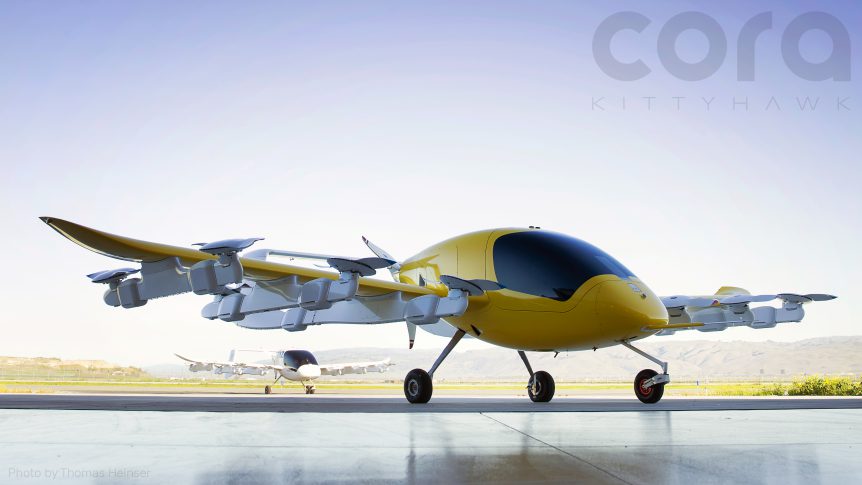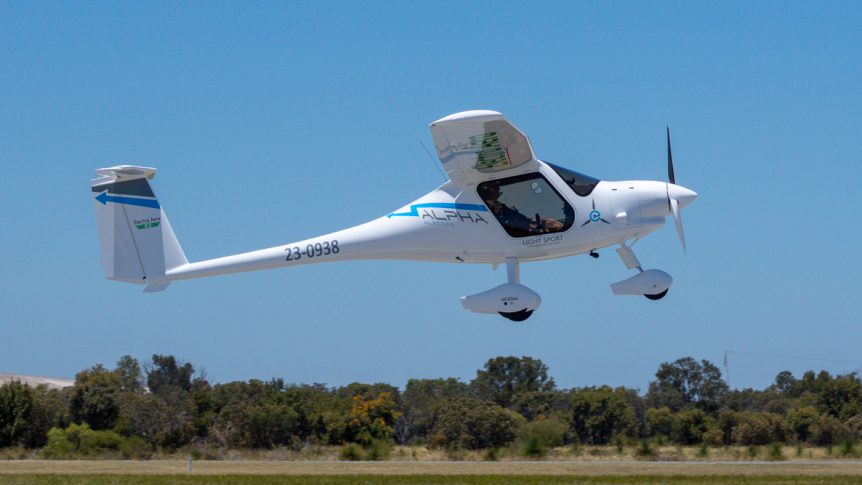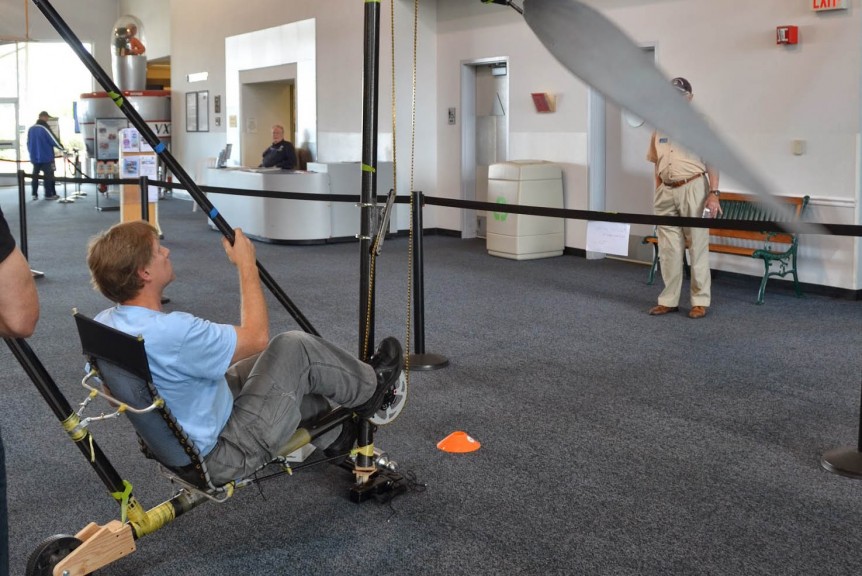Amprius has announced a 500 Watt-hour per kilogram cell, essentially doubling the energy density available up to now. Remember, though, that cell-levels of energy drop as the cells are incorporated into modules and packs, carrying the burdens of containment packaging, bus bars, and battery management systems (BMS) that lower total output. Pack levels will be lower. Slow Progress This comes as the culmination of at least 14 year’s work, starting with Yi Cui’s work at Stanford University. Your editor first saw him at a 2009 CAFE Foundation symposium at the Hiller Aviation Museum in San Carlos, California. He was a proponent of the 10X battery, which at that time would have meant 10 times the energy storage of then typical cells, or around 10 times the 200 Watt-hours per kilogram then considered to be a respectable achievement. This blog reported in 2013, “According to Green Car Congress, ‘The company has also demonstrated greater than 650 and 700 Wh/L batteries with …
H3X HPDM-3000 – a Three Megawatt-Motor?
H3X is shaking things up with its announcement of its HPDM-3000, a three megawatt motor. Thirteen years ago, your editor gave his first presentation at an electric aircraft symposium, held that year in the Hiller Aviation Museum in San Carlos, California. Dr. Brien Seeley, founder and then head of the CAFE (Comparative Aircraft Flight Efficiency) Foundation, had asked for research on motors of 100 kilowatts or more. It was hard to find units of over 50 kW at that time, but people like Roman Susnik were managing ultralight motors of over 100 kW for motorized sailplanes With competitors like MagniX and ZeroAvia in the game, H3X introduces the HPDM-3000, a 2.8 mW (3,753 horsepower) ultra-high power density integrated modular motor drive (IMMD). Developed by a group of young graduates of the University of Wisconsin at Madison, H3X’s motors combine extreme lightness for the power produced with cutting edge manufacturing techniques. In this video, Chief Technology Officer Max Liben explains the …
Zee? Kitty Hawk? Cora?
Different Names, Different Configurations Zee, One of two aircraft companies funded by Google founder and CEO Larry Page, has been a highly mysterious business. Its web pages mostly gave discrete job descriptions for those willing to sign up for a mostly undefined mission. Occasional glimpses of patent drawings, spy shots of a multi-rotor craft in Google’s Mountain View, California parking lot came into view, and later, in-flight shots of other, different looking craft came from Hollister, California. Kitty Hawk, the other company funded by Larry Page, seems to have subsumed Zee and produced a 12-rotor, single-propeller aerial taxi about the size of a Cessna 150, but capable of vertical takeoffs and landings and seamless transitions to forward flight. A white example has flown at Hollister airport and a yellow version at a field in New Zealand. An Almost Epic Journey The intellectual, physical and geographical journey of this craft is almost epic, and seems to have resulted in a 13-motored …
Book Your Perth Alpha Electro Flights for the Early Morning
Two Things That May Not Seem Related at First Recent news that Penrith, Australia was the hottest place on earth was underlined by videos of melting highways. Penrith, a suburb of Sydney, reached 47.3° C (117° F), enough to turn asphalt into a sticky mess and force drivers onto less gummy shoulders. Although over 2,400 miles away, Perth, home to Joshua Portlock’s Electro.Aero flying service, is at roughly the same latitude, and experienced near-record heat this month. Possibly, that accounts for the all-caps caution for prospective flyers: “WE RECOMMEND EARLY MORNING FLIGHTS IN SUMMER FOR THE SMOOTHEST CONDITIONS.” Joshua’s company took delivery of a Pipistrel Alpha Electro, and flew it on January 2, a first in Australian aviation. He and his team are offering two-hour instructional flights in the new aircraft for $220 AUD (about $172 USD). This opportunity to take lessons in an electric airplane will include the benefits of quiet, smooth flight. But heat brings on turbulence, and …
Vin Fiz and Solar Impulse
Calbraith Perry Rodgers, the first person to fly across the United States, was deaf from an early childhood disease. Even though he came from a long line of naval heroes, this handicap kept him from joining the Navy, but didn’t slow his quest for adventure. He was one of the first to sign up for flying lessons with the Wright Brothers at their home base in Ohio. He was 31 years old when William Randolph Hearst offered a $50,000 prize to the first aviator to fly coast-to-coast in 30 days or less. Rodgers convinced the Armour Meat Packing Company to sponsor his attempt as a promotion for their new soft drink, Vin Fiz. As a coincidence, your editor visited the Hiller Aviation Museum a few weeks ago, and they have a beautiful replica of the Wright Model EX in Vin Fiz markings, just as it looked when Rodgers set out from Sheepshead Bay, Long Island, New York, on September 17, …
The Sustainable Aviation Symposium – A Wealth of Knowledge
Coming May 6th and 7th, the first-ever Sustainable Aviation Symposium will take place at the Sofitel San Francisco Bay Hotel. This year’s presenters include an international array of accomplished talent in aerodynamics, power, and energy storage, with a few surprises on tap. Keynote speakers include: NASA Chief Scientist Dennis Bushnell PADA Trophy winner and Pipistrel Designer Dr. Tine Tomazic Dr. Joseph Kallo of the DLR (Germany’s NASA) Lehigh University’s Dr. Justin Jaworski Pelican Aero Group’s Philip Barnes Additional presentations include Nobel Prize winner Dr. Benjamin Santer of the Intergovernmental Panel on Climate Change; Eric Raymond, the highest time solar pilot in the world (his latest 6-seat solar aircraft pictured above); Dr. Yi Cui of Stanford University with the latest in battery technology, Dr. Daniel P. Raymer on Inspirations from the Vought 173 and PADA Trophy winner Boris Popov, whose ballistic parachutes have saved hundreds of lives. Another dozen, including NASA battery expert Dr. Eric Darcy and Siemens e-Aircraft head Dr. Frank …
An American HPA Takes Flight
Alec Proudfoot made a 233-meter (764-feet), 37-second flight in his DaSH PA (Dead Simple Human-Powered Airplane) on December 4 at Half Moon Bay Airport west of San Francisco. The 33.3 meter (108.27 feet) wingspan (it can be extended to 40 meters, or 131.23 feet) aircraft did well until a weak flange on the vertical tail mount failed. Alec reported his personal state of readiness and some details of the flight in an email to the British Human Powered Flying Club. “…pilot max weight at just above 90 kg (me, out of shape and about 15 lbs. heavier than optimal). “It flew a lot easier than expected (meaning less power required than I thought it would) and handled great. A bit of PIO (pilot-induced oscillation) in the middle of the flight as I sorted out the handling (we slowed the servos way down to avoid moving our delicate control surfaces too fast — but we need to speed them back up …
Batteries That Heal Themselves
Alert reader Colin Rush provided this breaking development in battery science. Regular readers will remember Dr. Yi Cui’s name. He’s a Stanford University scientist who has worked with paper batteries, much more powerful electrodes, and means of helping batteries stay together under the continuous strain of expanding and contracting during charging and discharging. He explained that at the third annual Electric Aircraft Symposium at the Hiller Aviation Museum, and has since adopted several tactics to overcome that problem. One commercial outgrowth of his work, Amprius, is working on commercial production that benefits from his insights. Since that internal flexing eventually leads to cracking of electrodes, Dr. Cui’s latest announcement brings some hope that such things can not only be overcome, but literally healed. Just as our bodies have internal resources to fight diseases and repair muscle and bone, batteries can be made to be self-healing. Dr. Cui has been a proponent of using silicon as a major component in electrodes, …






